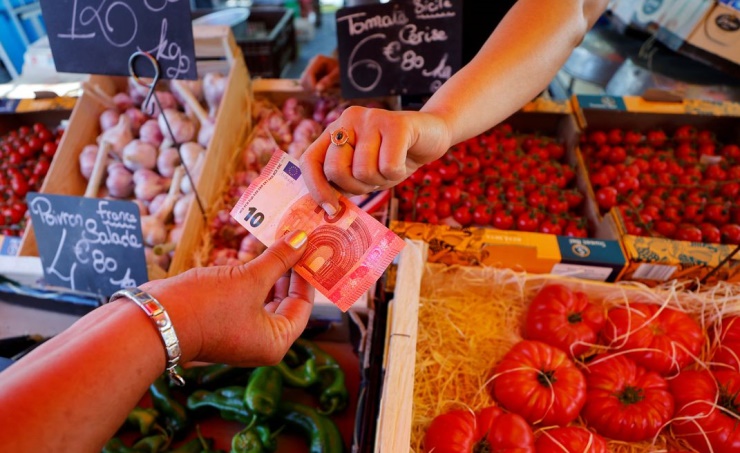
The euro held onto its recent gains on Tuesday ahead of European inflation figures this week that are expected to run hot and a speech from central bank chief Christine Lagarde, while a rally in oil prices boosted commodity currencies.
The euro rose 0.28% overnight and at one point poked above its 50-day moving average. It last sat at $1.0574, Reuters reports.
The dollar held modest overnight gains on other currencies and traded at 135.33 yen and $0.693 per Australian dollar in the Asia session.
German inflation figures are due on Wednesday, French data on Thursday and euro zone numbers on Friday. European Central Bank President Lagarde is also due to speak at the ECB forum in Sintra, Portugal, at 0800 GMT on Tuesday.
“This set of inflation data will have a significant influence on the ECB’s monetary policy forward guidance, especially on the trajectory … of its interest rate hike cycle that is expected to kick start in July,” said CMC analyst Kelvin Wong.
Hike expectations have the euro trading firmly against the yen, and it last bought 143.1 yen close to last week’s seven-year high of 144.24.
It also has momentum on sterling and has gained 1.2% this month to 86.18 pence.
The weak spot is against the Swiss franc which has rocketed to test parity on the common currency following a surprise rate hike by the Swiss National Bank earlier in June.
Elsewhere, a third straight day of gains for oil helped the Canadian dollar reach C$1.2858 versus its U.S equivalent, its highest in a fortnight. It also lent support to the Norwegian crown at 9.79 per dollar just off a two-week peak hit overnight.
At the other end of the dial, higher oil prices caused the partially convertible Indian rupee to open at a record low, and fall further to 78.67 per dollar. read more
Other moves were modest as traders try and navigate between relief that signs of weakness in recent global economic data can moderate rate hikes, and worry that it could be a harbinger of the onset of a difficult period of stagflation.
Some of the heat has come out of bets on U.S. interest rate rises, with the peak in the Federal Reserve’s benchmark funds rate now seen hovering around 3.5% next year rather than 4% or above, but the dollar has not yet fallen far from lofty peaks.
The U.S. dollar index struck a two-decade high of 105.79 this month and was last steady at 103.93.
The risk-sensitive Australian and New Zealand dollars have been left behind in last week’s stock market bounce. The kiwi was steady at $0.6295 on Tuesday.
Sterling was similarly becalmed at $1.2268.
“Stay long the dollar until some of the uncertainty has reduced,” said Societe Generale strategist Kit Juckes.
“The dollar will fall likely only when the global economy is on a more sustainable growth path … markets are forward-looking, but all we can see ahead today is danger.”












